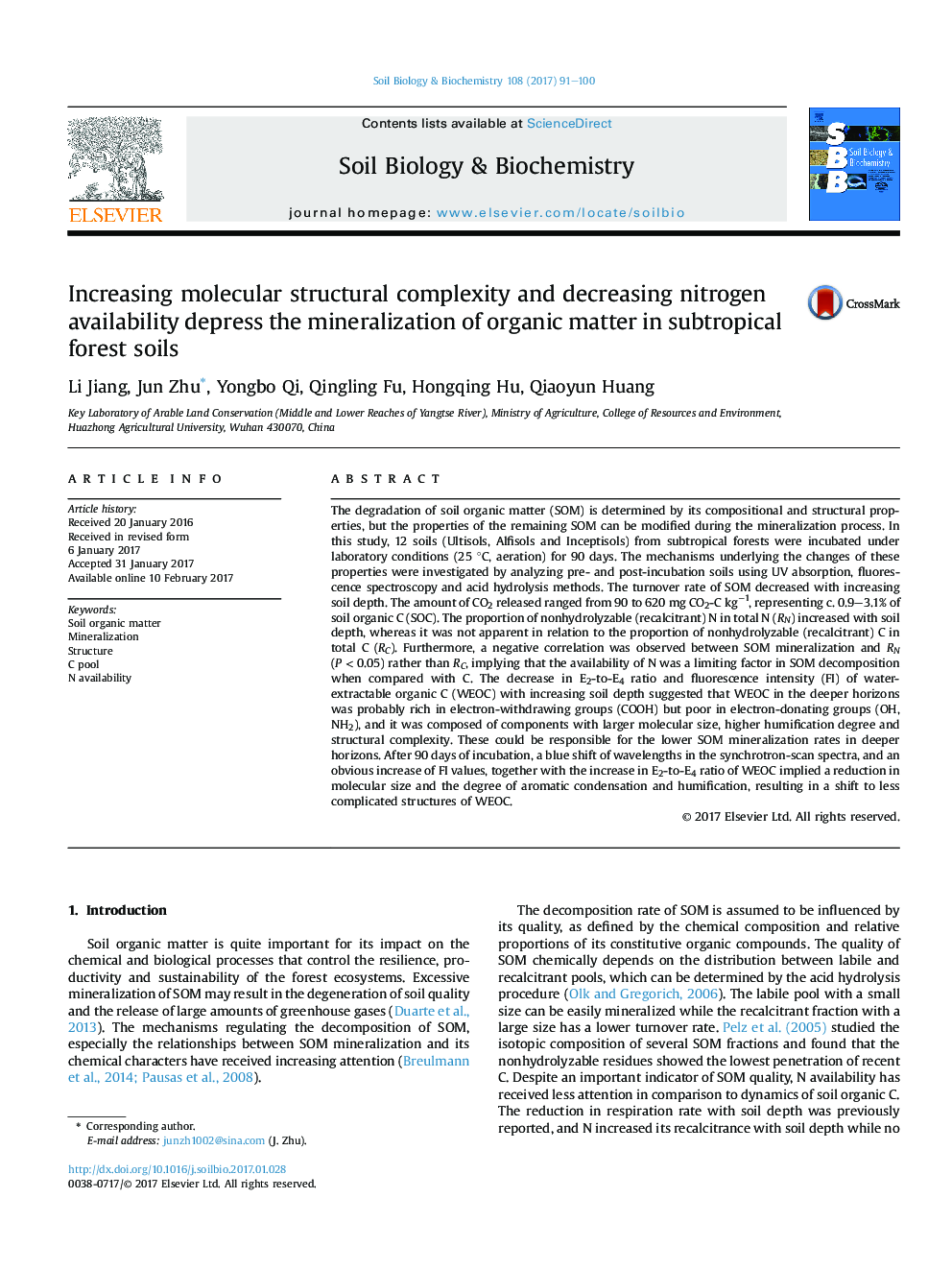| کد مقاله | کد نشریه | سال انتشار | مقاله انگلیسی | نسخه تمام متن |
|---|---|---|---|---|
| 5516539 | 1542576 | 2017 | 10 صفحه PDF | دانلود رایگان |
- Compared with its quantity, SOM quality showed more importance in mineralization rate.
- The availability of N was a limiting factor in SOM mineralization when compared with C.
- Higher degree of aromatic condensation and humification of WEOC depressed the SOM mineralization.
- Molecular structures of WEOC shifted to be less humified after a short-term incubation.
The degradation of soil organic matter (SOM) is determined by its compositional and structural properties, but the properties of the remaining SOM can be modified during the mineralization process. In this study, 12 soils (Ultisols, Alfisols and Inceptisols) from subtropical forests were incubated under laboratory conditions (25 °C, aeration) for 90 days. The mechanisms underlying the changes of these properties were investigated by analyzing pre- and post-incubation soils using UV absorption, fluorescence spectroscopy and acid hydrolysis methods. The turnover rate of SOM decreased with increasing soil depth. The amount of CO2 released ranged from 90 to 620 mg CO2-C kgâ1, representing c. 0.9-3.1% of soil organic C (SOC). The proportion of nonhydrolyzable (recalcitrant) N in total N (RN) increased with soil depth, whereas it was not apparent in relation to the proportion of nonhydrolyzable (recalcitrant) C in total C (RC). Furthermore, a negative correlation was observed between SOM mineralization and RN (P < 0.05) rather than RC, implying that the availability of N was a limiting factor in SOM decomposition when compared with C. The decrease in E2-to-E4 ratio and fluorescence intensity (FI) of water-extractable organic C (WEOC) with increasing soil depth suggested that WEOC in the deeper horizons was probably rich in electron-withdrawing groups (COOH) but poor in electron-donating groups (OH, NH2), and it was composed of components with larger molecular size, higher humification degree and structural complexity. These could be responsible for the lower SOM mineralization rates in deeper horizons. After 90 days of incubation, a blue shift of wavelengths in the synchrotron-scan spectra, and an obvious increase of FI values, together with the increase in E2-to-E4 ratio of WEOC implied a reduction in molecular size and the degree of aromatic condensation and humification, resulting in a shift to less complicated structures of WEOC.
Journal: Soil Biology and Biochemistry - Volume 108, May 2017, Pages 91-100
